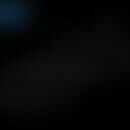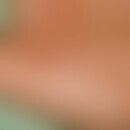DefinitionThis section has been translated automatically.
The RFXANK gene (RFXANK stands for "Regulatory Factor X Associated Ankyrin Containing Protein") is a protein-coding gene located on chromosome 19p13.11. Several alternatively spliced transcript variants encoding different isoforms have been described for this gene.
Regulatory Factor X Associated Ankyrin Containing Protein,1 encoded by the RFXANK gene, together with regulatory factor X-associated protein and regulatory factor 5, forms a complex that binds to the X-box motif of certain MHC class II gene promoters and activates their transcription.
After binding to the X-box motif of the promoter, this complex associates with the non-DNA-binding factor MHC class II transactivator, which controls cell type specificity and inducibility of MHC class II gene expression. This protein contains ankyrin repeats involved in protein-protein interactions.
Clinical pictureThis section has been translated automatically.
See also under MHC class II defect. Class II transactivator genes include:
- the transactivator gene (CIITA)
- the gene for regulatory factor X-5 (RFX5)
- the gene for the RFX-associated protein (RFXAP)
- the gene for RFXANK.
Mutations in the RFXANK gene are responsible for >70% of all known patients worldwide. However, it is not the genes themselves that are responsible for the disease phenotype, but defects in the transacting factors required for expression of the MHC class II genes.
Diseases associated with RFXANK include:
the bare lymphocyte syndrome, type II
Note(s)This section has been translated automatically.
Major histocompatibility class (MHC) II molecules are transmembrane proteins that play a central role in the development and control of the immune system.
LiteratureThis section has been translated automatically.
- Cai YQ et al (2020) A Novel RFXANK Mutation in a Chinese Child With MHC II Deficiency: Case Report and Literature Review. Open Forum Infect Dis 7:ofaa314.
- Hanna S et al (2014) MHC class I and II deficiencies. J Allergy Clin Immunol 134:269-275.



